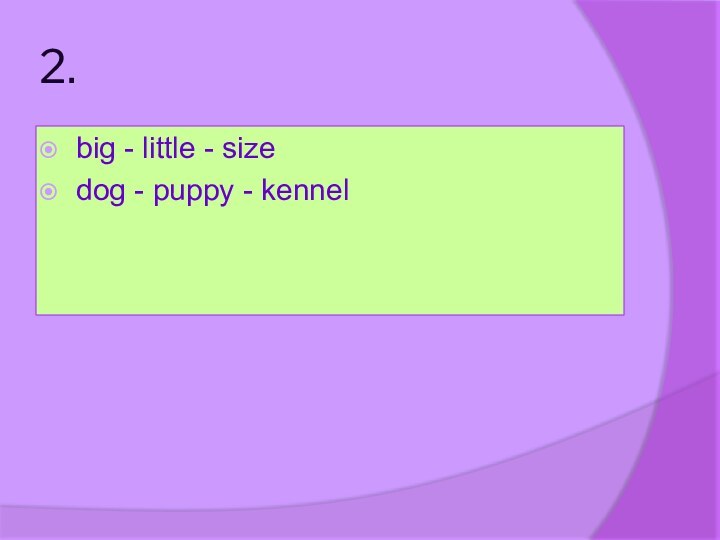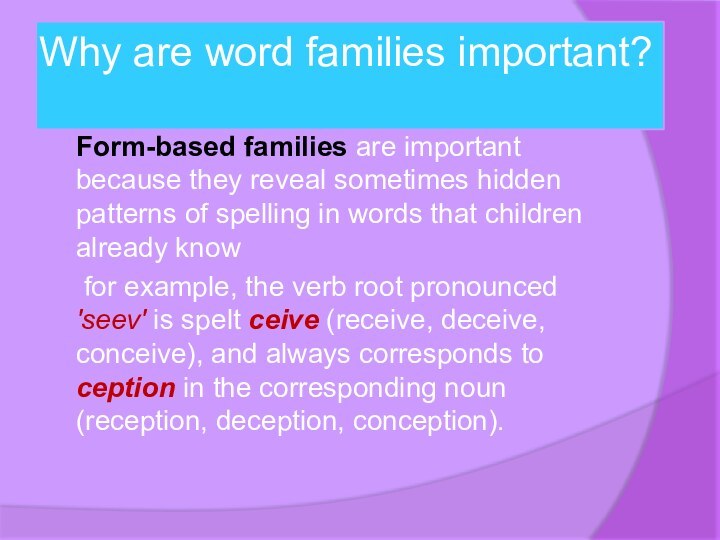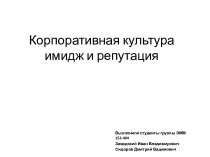- Главная
- Разное
- Бизнес и предпринимательство
- Образование
- Развлечения
- Государство
- Спорт
- Графика
- Культурология
- Еда и кулинария
- Лингвистика
- Религиоведение
- Черчение
- Физкультура
- ИЗО
- Психология
- Социология
- Английский язык
- Астрономия
- Алгебра
- Биология
- География
- Геометрия
- Детские презентации
- Информатика
- История
- Литература
- Маркетинг
- Математика
- Медицина
- Менеджмент
- Музыка
- МХК
- Немецкий язык
- ОБЖ
- Обществознание
- Окружающий мир
- Педагогика
- Русский язык
- Технология
- Физика
- Философия
- Химия
- Шаблоны, картинки для презентаций
- Экология
- Экономика
- Юриспруденция
Что такое findslide.org?
FindSlide.org - это сайт презентаций, докладов, шаблонов в формате PowerPoint.
Обратная связь
Email: Нажмите что бы посмотреть
Презентация на тему Morphology
Содержание
- 2. The history of morphological analysis dates back
- 3. The term "morphology" was coined by August Schleicher in 1859.
- 5. Word families are groups of words that
- 6. The 37 most common word families in
- 9. similar in formmeanings are relatedWord familiesword -
- 10. 1.word - wordy - word (verb) -
- 11. 2.big - little - sizedog - puppy - kennel
- 12. Why are word families important? Form-based families
- 13. Meaning-based families are important because they reveal
- 14. Reference: Richard E. Wylie and
- 15. Скачать презентацию
- 16. Похожие презентации
The history of morphological analysis dates back to the ancient Indian linguist Pāṇini, who formulated the 3,959 rules of Sanskrit morphology.















Слайд 5 Word families are groups of words that have
a common feature or pattern - they have some
of the same combinations of letters in them and a similar sound.Слайд 6 The 37 most common word families in English
(according to Wylie and Durrell) are: ack, ain, ake,
ale, all, ame, an, ank, ap, ash, at, ate, aw ay, eat, ell, est, ice, ick, ide, ight, ill, in, ine, ing, ink, ip, it, ock, oke, op, ore, ot, uck ,ug, ump, unk.
Слайд 9
similar in form
meanings are related
Word families
word - wordy
- word (verb) - wording - word-list … (but
not: worth, worry)family - familiar - unfamiliar - familiarity - familiarise … (but not: famine, famous)
word - wordy - word (verb) - wording - word-list … (but not: worth, worry)
family - familiar - unfamiliar - familiarity - familiarise … (but not: famine, famous)
Слайд 10
1.
word - wordy - word (verb) - wording
- word-list … (but not: worth, worry)
family - familiar
- unfamiliar - familiarity - familiarise … (but not: famine, famous)
Слайд 12
Why are word families important?
Form-based families are important
because they reveal sometimes hidden patterns of spelling in
words that children already knowfor example, the verb root pronounced 'seev' is spelt ceive (receive, deceive, conceive), and always corresponds to ception in the corresponding noun (reception, deception, conception).
Слайд 13 Meaning-based families are important because they reveal links
and patterns of meaning in words that children already
knowfor example, many adjectives and nouns are related as in the trio big - little - size.
Слайд 14
Reference:
Richard E. Wylie and
Donald D. Durrell, 1970. "Teaching Vowels Through Phonograms." Elementary
English 47, 787-791.www.phon.ucl.ac.uk/home/dick/tta/wf/wf.htm





























